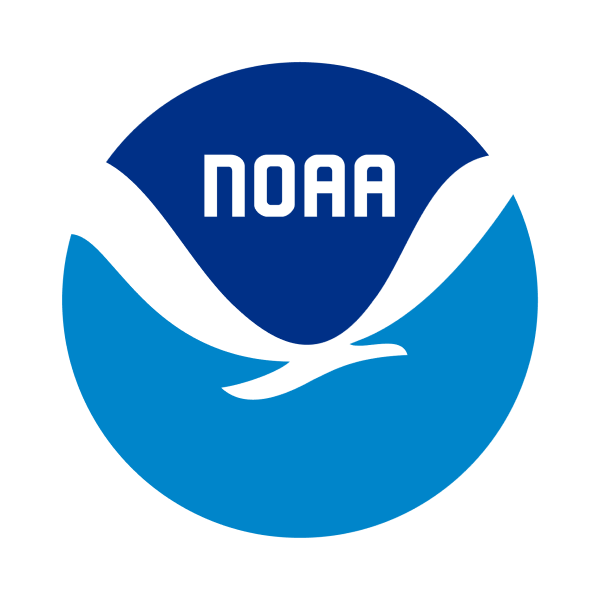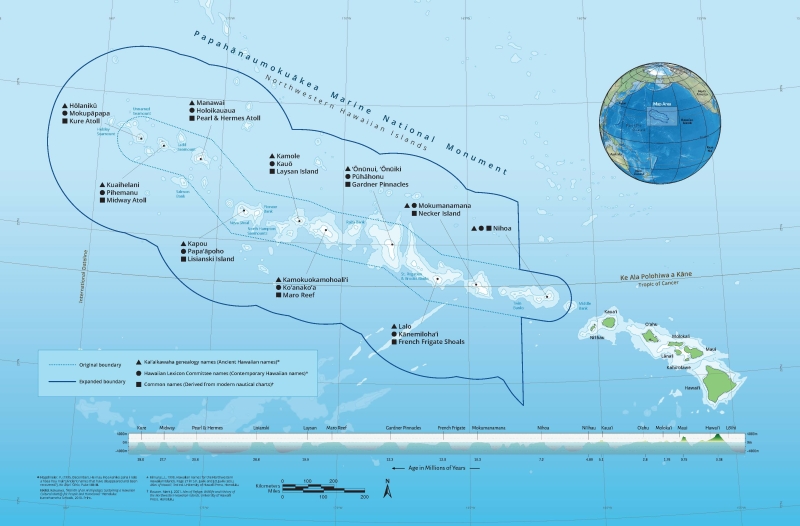The Hawaiian Islands are located in the North Pacific Gyre and are the most remote island chain in the world, yet the beaches are littered with marine debris, including the shores of the largely uninhabited Papahānaumokuākea Marine National Monument (monument). The North Pacific Gyre carries marine debris from all over the Pacific Ocean to Hawai‘i, and because of where these islands are located within the gyre, they receive very large amounts. NOAA has conducted marine debris removal missions with partners in the monument since 1996. Historically, how often and intense these efforts have been depends on the labor, available ship time, and partners. Since 1996, NOAA has removed a total of 1,167 metric tons of debris through near annual missions. That’s equivalent to about ten adult, blue whales which is the largest animal on the planet!
Cleanup Efforts Over The Years
1996 - 2011
During research missions in the monument from 1996-1999, small supplemental efforts to remove marine debris began. These efforts grew and in 2004 NOAA’s Pacific Islands Fisheries Science Center (PIFSC) removed 116 metric tons of debris from the islands. After 2005, the mission scaled back into maintenance mode with a focus on keeping pace with new marine debris building up on shorelines and resurveying areas with historically high amounts of marine debris.
In July 2005, the M/V (Motor Vessel) Casitas, a 145-foot ship chartered by NOAA for marine debris removal, ran aground at Pearl and Hermes Atoll. None of the personnel on board— including PIFSC divers—were injured, but the ship damaged coral when it grounded. Following the vessel’s removal, NOAA scientists participated in field assessment studies to determine the extent of the impacts and potential for restoration activities. NOAA’s Damage Assessment Remediation and Restoration Program (DARRP), a program composed of groups out of several NOAA offices that protects and restores injured natural resources at hazardous waste sites, oil spills, and vessel groundings, stepped in to continue the assessment. In the spring of 2011, DARRP issued a final restoration plan to restore coral injuries caused by the grounding. In forming the plan, the resource trustees determined that removing nets from the reefs at Pearl and Hermes Atoll and surrounding atolls compensated for the injuries incurred during the M/V Casitas's grounding and subsequent response. Any settlement from the responsible party would go toward additional net removal missions. The missions scaled back up that year with DARRP funding from the M/V Casitas settlement and with additional support from the Papahānaumokuākea Marine National Monument and NOAA’s Marine Debris Program (MDP).
2011 - 2015
With the renewed support, the PIFSC crew again pulled about 81 metric tons of derelict gear from the shallow waters and corals from 2011-2013. “Everyone has the same goal, here,” said Matthew Parry, a NOAA Fisheries biologist and lead for the DARRP restoration funds. “We want to remove nets and marine debris from that area, so we said, ‘let's get some economies of scale, pool our resources for a combined effort, and stretch these dollars further'; what we've gotten is a much, much larger level of response in net removal than we ever expected to do on our own.”
In September 2014, a team of 17 scientists and trained divers from PIFSC and two of the NOAA Marine Debris Program’s own staff embarked on a 33-day mission to remove derelict fishing nets and plastics from the sensitive reefs, shallow waters, and shorelines of the monument. Divers undergo extensive training and rigorous physical assessments to become part of the mission. The crew made its way there aboard the NOAA Ship Oscar Elton Sette and removed debris from five areas: Kamokuokamohoali‘i (Maro Reef, Ko‘anako‘a), Kamole (Laysan Island, Kauō), Kapou (Lisianski Island, Papa‘āpoho), Manawai (Pearl and Hermes Atoll, Holoikauaua), and Kuaihelani (Midway Atoll, Pihemanu)*.
The team disembarked from the NOAA Ship Oscar Elton Sette at each location and worked in teams from small boats, conducting in-water surveys and pulling nets weighing hundreds of pounds from the corals and seafloor. At islands and atolls where there is some land, such as Midway Atoll and Laysan Island, the team conducted shoreline cleanups and surveys. PIFSC, in cooperation with the NOAA Marine Debris Program, started a study to understand the amount of marine debris accumulating on the shorelines of Kuaihelani (Midway Atoll, Pihemanu).
2016-2019
The marine debris removal mission of 2016 yielded nearly 11 metric tons of debris from the monument. Ten NOAA scientists were a part of the removal effort that spanned 32 days. “This cross-agency effort to remove debris is a tremendous undertaking and it emphasizes the need to focus efforts on marine debris prevention to stop debris from showing up on these once pristine shorelines,” said NOAA Marine Debris Program Pacific Islands Regional Coordinator Mark Manuel.
In September 2018, a 41-day, three-leg, large-scale mission to survey and remove debris from the monument began. With two ships, NOAA PIFSC divers and scientists successfully removed over 74 metric tons of debris from the shorelines and shallow coral reefs of the monument. Additionally, the removal team conducted a pilot study using unmanned aerial systems to locate derelict fishing gear and investigate the usefulness of using the technology. Some of the derelict fishing gear removed included 10,596 buoys and floats, 7,797 oyster aquaculture spacers, and 2,575 nets and net fragments.
Through a collective effort, the 2018 mission built upon the long history of removal efforts in the monument. “The biggest accomplishment of the 2018 mission was the willingness of all co-managers of Papahānaumokuākea Marine National Monument to collaborate and share our limited resources to maximize the effort we were able to put forth in conserving and protecting the wildlife and its habitat,” shared James Morioka, the then Operation Manager, Ecosystem Sciences Division, PIFSC, Joint Institute for Marine and Atmospheric Research.
2021-Present
After a pause for the COVID-19 pandemic, the marine debris removal missions were reinvigorated in partnership with the Papahanaumokuakea Marine Debris Project, a non-profit organization focused on large-scale marine debris removal in the monument. In 2021 NOAA PIFSC and PMDP, with support from the NOAA Marine Debris Program, partnered on two missions, one in-water reef cleanup and one shoreline cleanup. The initial shoreline mission spanned 23 days and four different islands Kamole (Laysan Island, Kauō), Kapou (Lisianski Island, Papa‘āpoho), Kuaihelani (Midway Atoll, Pihemanu), Hōlanikū (Kure Atoll, Mokupāpapa). In total, the team collected 43 metric tons off of 10-miles of shoreline. Later in 2021 the team returned to the monument for an in-water cleanup which lasted 30 days and traveled to Hōlanikū (Kure Atoll, Mokupāpapa), Kuaihelani (Midway Atoll, Pihemanu), Manawai (Pearl and Hermes Atoll, Holoikauaua), Kapou (Lisianski Island, Papa‘āpoho), Kamole (Laysan Island, Kauō), and Kamokuokamohoali‘i (Maro Reef, and Ko‘anako‘a, Nalukākala). During this mission, 56 metric tons of debris were collected, bringing the grand total of debris to 99 metric tons in 2021.
In 2022, PMDP continued to build its capacity and hosted two missions. The NOAA Marine Debris Program is supporting this work through a 5-year, $5.8 million grant to the National Fish and Wildlife Foundation. This funding to NFWF is being matched by Marc and Lynne Benioff for a total investment of $12M over FY22-FY26. This funding will continue to support two annual missions to the monument through 2026.
During the Fall 2022 mission, the team visited 4 islands and atolls - Hōlanikū (Kure Atoll, Mokupāpapa), Kuaihelani (Midway Atoll, Pihemanu), Manawai (Pearl and Hermes Atoll, Holoikauaua), Kapou (Lisianski Island, Papa‘āpoho). 6 operational days were spent on Kapou, Hōlanikū, and Kuaihelani collectively, during those days the team removed 17 metric tons of debris from in-water and onshore operations. The last 12 operational days of the mission were spent on Manawai. There, the team removed almost 31 metric tons of debris, bringing the total to 48 metric tons of debris. The team was also able to release two entangled Hawaiian green sea turtles while on Manawai.
2023 was a record-breaking year for the monument removal missions. Within one week, seven sea turtles were found in ghost nets, including three sea turtles in the same net. Thankfully, all seven turtles were released from the nets and were seen swimming away. The PMDP team spent two months within the monument on two separate missions. During the first mission, the team removed debris from three islands: Kamokuokamohoali‘i (Maro Reef, and Ko‘anako‘a, Nalukākala), Kamole (Laysan Island, Kauō), and Kapou (Lisianski Island, Papa‘āpoho). After 30 days in the monument, the team began their trip back to Honolulu with 39 metric tons of debris on board their vessel. The team returned to the monument less than a month later, in late August. This mission included a new stop, Lalo (French Frigate Shoals, Kānemiloha‘i, Mokupāpapa). They also included stops at Kamokuokamohoali‘i (Maro Reef, and Ko‘anako‘a, Nalukākala), Hōlanikū (Kure Atoll, Mokupāpapa), and Manawai (Pearl and Hermes Atoll, Holoikauaua). At Hōlanikū, the team discovered one of the largest nets in the program's history. This net, weighing in at 6 metric tons, was partially buried in the sand. Over the course of three days, the team made 11 boat trips transporting the net back to their ship. The team returned to Honolulu Harbor after the mission with a record amount of debris, 57 metric tons.
*It is important to use the ancient, contemporary, and common names of the islands to acknowledge the historical and cultural significance of Papahānaumokuākea Marine National Monument. Learn more about the ancient and contemporary Hawaiian names.
 An official website of the United States government.
An official website of the United States government. 

